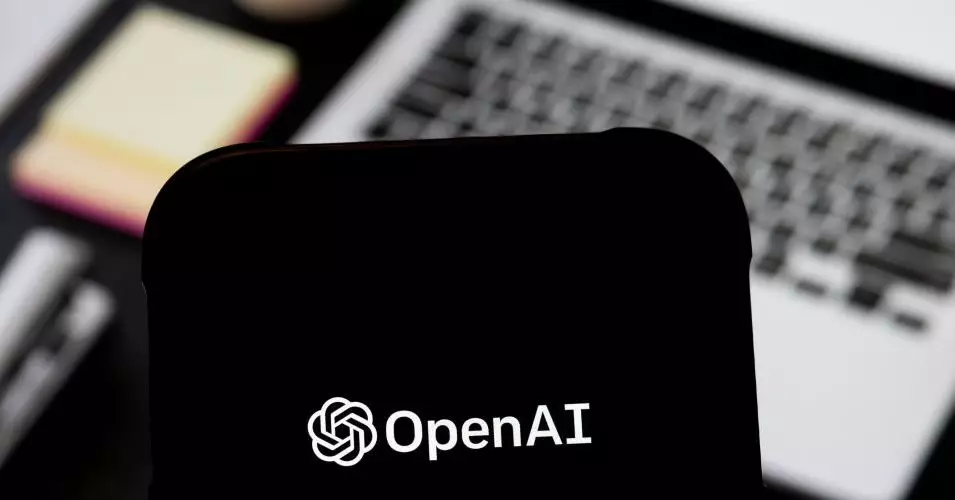In a groundbreaking announcement, Sam Altman, the CEO of OpenAI, revealed the company’s commitment to rolling out a new open-weight artificial intelligence model within the next few months. This decision not only marks a pivotal shift for OpenAI but also reflects the broader competitive pressures in the AI realm, particularly in light of the stunning triumphs of competitors such as DeepSeek and Meta with their respective models. OpenAI’s move towards openness signals a paradigm shift in how AI resources will be disseminated and employed, igniting excitement among developers and researchers alike.
The statement by Altman, shared on social media platform X, underscores a growing realization within OpenAI that their approach to model accessibility was becoming outdated. The earlier pronouncement where Altman mentioned being “on the wrong side of history” has reverberated through the AI community, acting as a clarion call for enhanced accessibility and collaboration. With the landscape becoming ever more competitive, OpenAI’s embrace of open-weight models is a strategic maneuver to reclaim its position as a leader in the AI ecosystem.
The Appeal of Open-Weight Models
What exactly are open-weight models, and why have they captured the imagination of both developers and enterprises? At their core, these models facilitate greater customization and a lower barrier for entry. By releasing weights—essentially the parameters that govern the behavior of the model—OpenAI will enable users to adapt the model to suit various needs, from handling delicate confidential data to exploring innovative applications that may not fit traditional frameworks.
Moreover, the allure of significantly reduced operational costs cannot be understated. Contrary to many conventional large language models that require hefty investments for training, recent developments, such as DeepSeek’s impressively efficient R1 model, which was trained at a fraction of those costs, have showcased the financial feasibility of open-weight technologies. As Clement Delangue, CEO of HuggingFace, aptly observed, the power of open-weight models is becoming increasingly apparent—this is a market that is no longer just an experiment but an evolving reality.
Addressing Challenges of Open-Weight Models
However, the road to the open-weight model is fraught with concerns and ethical dilemmas. While this approach promotes innovation and accessibility, it also raises alarm bells among researchers wary of potential misuse. Questions surrounding cybersecurity risks and the possibility of malicious applications loom large. For instance, open-weight models could inadvertently empower individuals with nefarious intentions to create cyber threats or even weaponize AI technologies for biological or chemical risks.
Addressing these challenges head-on, OpenAI is adopting a proactive stance. Executives such as Steven Heidel and Johannes Heidecke have been vocal about the company’s commitment to performing thorough testing and safety assessments to prevent misuse. OpenAI’s Preparedness Framework serves as a blueprint for maintaining ethical guidelines while promoting open innovation. Such measures are crucial to building trust and mitigating fears of catastrophic risks associated with open-weight models.
Inviting a Collaborative Future
In creating a pathway for developers to engage with the forthcoming model, OpenAI’s invitation for early access paves the way for collaboration and shared learning in the AI field. With commitments to host developer events showcasing prototypes, OpenAI is not just releasing technology but fostering a community around it. This initiative is likely to spur a vibrant ecosystem of innovation, allowing developers to build and iterate on applications grounded in open-weight technology.
Moreover, the spotlight is firmly on how OpenAI’s adoption of open models will influence other industry players. Companies like Meta have already started down this path with their Llama models, but the dialogue around transparency and data sharing remains a significant friction point. Critics argue that many open-model implementations are still shrouded in secrecy, limiting true collaborative opportunities. OpenAI, by adopting a more open stance, may set a new standard in open-source AI development that encourages accountability and greater transparency.
Ultimately, the unveiling of an open-weight model from OpenAI could herald a new era in artificial intelligence, characterized by empowerment, innovation, and ethical responsibility. As the community watches with bated breath, it is clear that the future of AI is not just about advanced algorithms but also about the frameworks that allow these powerful tools to be shared responsibly among a diverse range of users.

